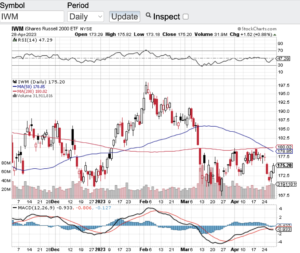Now that the first half of the year is in the books in which we witnessed the markets hitting all-time highs, investor focus should shift to Q2 earnings reporting season and the upcoming election. Once again the S&P 500 (see chart here) and the Nasdaq Composite (see chart here) hit record highs on Friday to close out the month of June. The Dow Jones Industrial Average (see chart here) is hovering around the 39000 zone, while the small-cap Russell 2000 (see chart here) continues to bounce around the 2000 level.
After the much-anticipated Presidential debate which is the first one in this election year, stocks reacted in a volatile manner on Friday. As mentioned above the S&P 500 (see chart here) and the Nasdaq Composite (see chart here) both set all-time highs on Friday before reversing and closing lower on the day. I am not sure why stocks took off at the open on Friday and set all-time highs especially with how the debate went on Thursday night. I refused to watch the debate for a variety of reasons and from what I am hearing and reading, I am glad I did not watch it. There are no words for what is going on here in our country and I will leave it at that. I’d rather focus on the positive which are the markets and how incredibly resilient they are.
As I look at the back half of the year, stocks should be put to the test from here on out. Q2 earnings reporting season is on deck with most companies reporting their results after the 4th of July holiday. Without question analysts and investors alike will be focused on the health of corporate America and how they are growing their top and bottom lines. This should be one of the main factors on whether this powerful rally continues. The other wild card in the mix is the upcoming election. Depending on how things shake out between now and the actual election, this could have an impact of a “black swan” type event and if this is the case, then we could see one wild ride into year-end.
Good luck to all 🙂
~George

